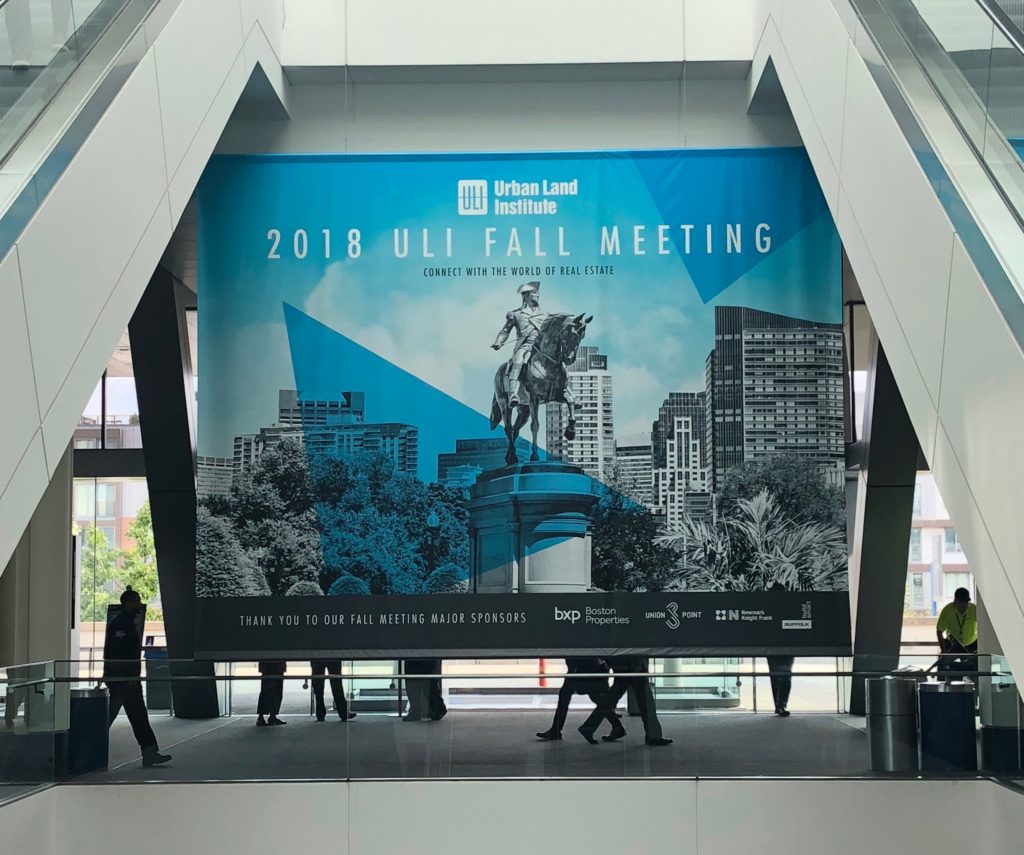ULI Special Report: For Renters, Walkability is Becoming More Valuable Than Public Transit

Technology is proving to be a major disruptor across sectors and real estate is no exception. Ride hailing and driverless vehicles were two top-of-mind disruptors at the 2018 ULI Fall Meeting in Boston, with industry panelists noting that these technological developments are fundamentally changing the way we build and manage our assets, and changing renter preferences from valuing public transit to putting a premium on walkability.
Of the two disruptors, ride-hailing is having the most immediate impact, as seen by a continued decline in the number of people obtaining drivers licenses and the number of single-occupancy vehicle rides, as well as a dip in public transit ridership, noted panelist Dave Bragg, Managing Director of Green Street Advisors.
He added that this decline in public transit use is prevalent across most major markets—with the exception of Seattle—which is beginning to have a negative impact on the growth prospects of transit-oriented developments (TODs).
“Being near transit has less of an impact today than it did a decade ago,” concurred Doug Linde, President & Director of Boston Properties. He added that it’s more important to create a sense of place, with access to amenities, rather than just being near a transit center.
As a developer, he noted that it’s still important to be close to transportation but there are also markets that aren’t in transit corridors that are valuable for other reasons, including strong demographics.
Premium for TODs Declining as Walkability Takes Precedence
Premiums for apartment assets close to transit centers are also declining a bit, noted Matthew Birenbaum, Chief Invesment Officer of AvalonBay Communities, not only as a result of ride-sharing but also an influx of new TOD supply. He added that thanks to ride-sharing apps like Uber and Lyft, commuters have other options than mass transit. However, walkability remains an important factor for renters, including access to experiences like retail and restaurants.
While multifamily developers over the past decade have typically built walkable communities near public transit, now it’s a lot easier to get to places without being directly on a transit line, added Don Briggs of Urban Edge.

In more suburban areas, ride-hailing may also reduce the number of cars households own. This would result in more garage space, which could potentially hurt the self-storage sector, Bragg said.
Over the longer term, autonomous vehicles (AVs) could further impact the value of transit-oriented developments. The panelists agreed, however, that many challenges, such as security risks and the need for more accurate technology, stand in the way of mass adaption of AVs. Linde said the use of AVs will likely start with long-haul autonomous trucks and spread to personal-use vehicles, if proven successful.
Bragg added that driverless technology will eventually bring benefits like lower safety and transportation costs, as well as less traffic, but there are many challenges to address before that can happen.
Parking Demands to Shift
How developers will deal with underwriting and planning parking at their real estate assets is an increasing issue as a result of these disruptors. All panelists agreed that they are seeing less need for parking, with Bragg reporting that Green Street Advisors forecasts parking demand to decline by 25% to 50% over the next decade. He added that the amount of parking in the U.S.—1 billion spaces—will likely be converted to other uses as a result.
For Birenbaum, his firm has changed its strategy from erring on the side of too much parking to erring on the side of less parking, when possible. He said that this can not only reduce the cost of the project but also improve the affordability of the asset for renters. For some assets in the firm’s portfolio where parking is being underutilized, AvalonBay is working with third-party apps to offer parking spaces to non-residents.
Linde added that another approach is to build parking so that it can be converted to other uses in the future by raising ceiling heights and creating flat floors instead of ramped floors.
The panelists also discussed how cities can address these impacts on public transit by investing more in their infrastructure. Public transit systems across the U.S. are largely underfunded and underinvested, Birenbaum said, and one factor his firm considers when looking at new markets is if the local government is investing in transit and the walkability of their communities.
Briggs agreed, adding that it will be up to the population, real estate community and legislative bodies to “figure out how to invest correctly in public transit for our future.”

